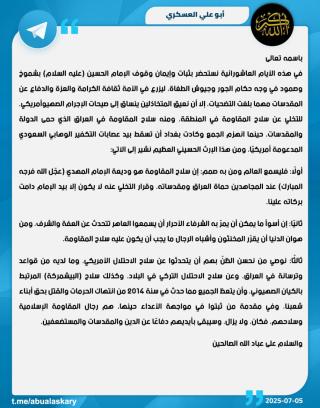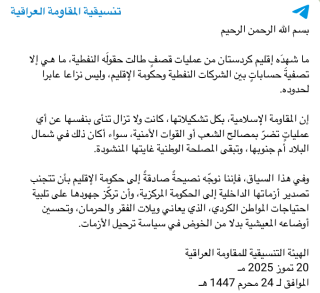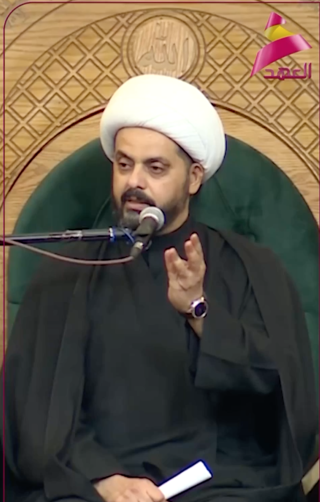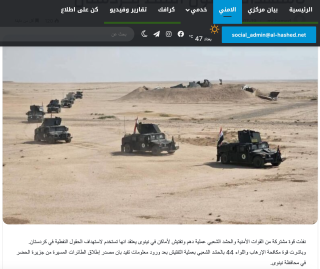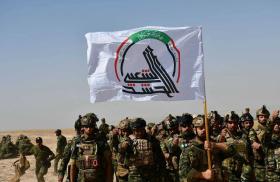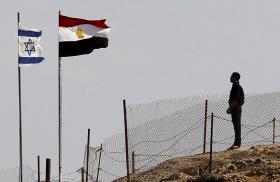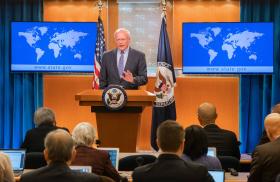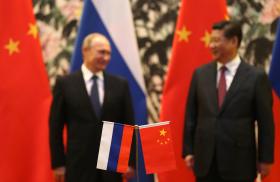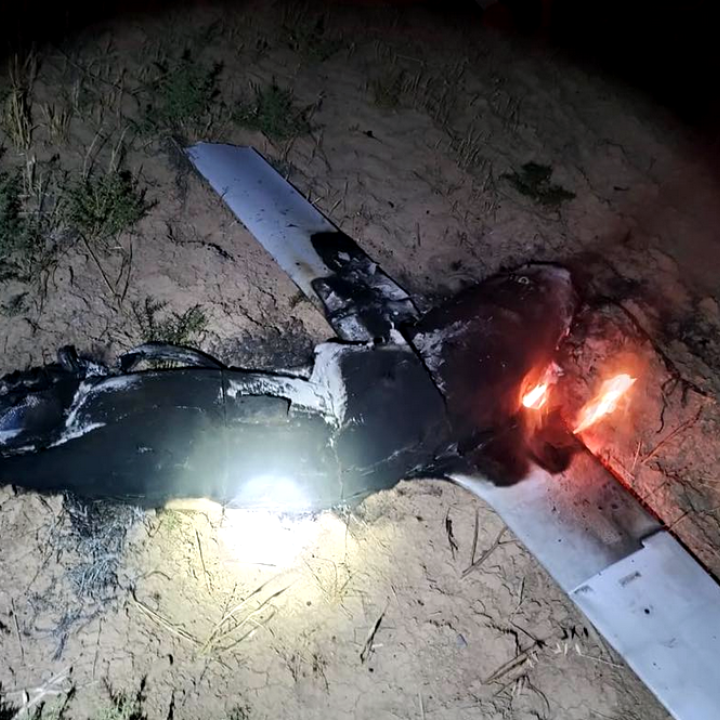
Militias Strain Credibility by Denying Involvement in Kurdistan Drone Attacks

Kataib Hezbollah and Asaib Ahl al-Haq are improbably trying to distance themselves from drone strikes in northern Iraq, including multiple attacks on U.S. oil investors.
In recent weeks, a series of drone attacks have targeted multiple security sites, oil fields, and power facilities in Iraqi Kurdistan, leading to the suspension of operations at several locations. In at least ten of the cases, the weapons used were Iranian-provided Shahed-101 explosive drones of the exact same kind that Iran-backed terrorist groups in Iraq have used on hundreds of occasions since 2023, including the militias Kataib Sayyid al-Shuhada (KSS), Kataib Hezbollah (KH), and Harakat Hezbollah al-Nujaba. The culpability of these groups was apparently reinforced by a statement posted July 5 by Abu Ali al-Askari, an online persona that changes hands but has been linked most consistently to KH member of parliament Hossein Moanes. Although the Abu Ali message did not directly reference the oil sector, it accused the Pershmerga forces of the Kurdistan Regional Government (KRG) of maintaining ties with Israel (Figure 1).
"Resistance" Leaders Protest Too Much
The Iran-backed militias that make up the self-styled "resistance" (muqawama) have vocally denied any involvement in the recent attacks. On July 20, the Iraqi Resistance Coordination Committee (Tansiqiya) broke its long silence—issuing its first statement in over a year—to publicly distance the militias from the drone strikes. This old "Tansiqiya" umbrella name had largely been replaced by the Islamic Resistance in Iraq label after October 7, 2023. Its return may indicate a shift in the militias’ posture back to a more internal focus following the recent Iran-Israel war. The statement reads:
What the Kurdistan Region has witnessed in terms of bombing operations targeting its oil fields is nothing but a settling of scores between oil companies and the regional government, and not a cross-border conflict. The Islamic Resistance, in all its formations, has always distanced itself from any operations that harm the interests of the people or the security forces, whether in the north or south of the country, [while protecting] the national interest remains its ultimate goal (Figure 2).
On the same day, the U.S.-designated terrorist and human rights abuser Qais al-Khazali—leader of the terrorist group Asaib Ahl al-Haq (AAH)—reiterated this stance during a Muharram sermon, implicitly accusing the KRG of orchestrating the attacks on oil infrastructure:
Recently, there have been numerous attacks targeting oil wells, oil fields, oil companies, and refineries...We condemn and reject these actions...If you want to know who is responsible, ask: who benefits from this act?...It should be noted that the Iraqi government...has done all it can to resolve the issue with the Kurdistan Region, urging the Region to hand over oil to the federal government...This came at a critical moment. Now, [after the attacks] the Kurdistan Regional Government can say: ‘We don’t have the oil to pay salaries.’ The oil isn’t available because the oil companies have halted operations...So, who benefits from this? (Figure 3)
To demonstrate their supposed commitment to stopping these attacks, the Popular Mobilization Forces (PMF) deployed Ansar al-Marjaiya—the 44th Brigade, known for its lack of ties to Iran—in a joint operation with units from the Iraqi security forces to search areas in Nineveh governorate “after receiving information indicating that the drones were launched from Jazirat al-Hadhar" (Figure 4). These so-called Atabat (shrine) units might be better employed policing Kirkuk and Tuz Khormatu, where most of the drone attacks seem to have originated.
Analysis
Needless to say, militia denials of involvement in the Kurdistan strikes should be treated with deep skepticism. On June 12 and June 17, before the wave of strikes began, multiple threatening statements were released by KSS, one of the most prolific terrorists groups involved in past attacks on the Kurdistan Region. On June 21, Israeli forces killed a senior KSS security official on the Iran-Iraq border. And on July 2, the former head of Iran’s Islamic Revolutionary Guard Corps (IRGC), Maj. Gen. Rahim Safavi, told AAH’s al-Ahad TV channel, “We warn northern Iraq [meaning the KRG] against any American threats originating from its territory.” Moreover, all of the identified drone debris found at impact points inside the KRG were Iranian-provided systems: nine Shahed-101s and one KAS-04. The militia allegation that Kurdistan is attacking its own energy sites indicates that KH and AAH have a very low estimation of their supporters' ability to think critically.
Given that the evidence so overwhelmingly points to the Iran-backed terrorist militias embedded within the Sudani government and the PMF, why are KH and AAH leaders denying their involvement? They may fear U.S. retribution via kinetic strikes and sanctions on militia and Iranian interests. They may also dislike the optics created by militias acting outside the law to attack the nation's oil and gas resources. Indeed, these incidents are perfect examples to justify both a future crackdown on “arms outside the state” and a concerted effort to prevent the PMF from becoming a permanent security agency—two hot issues in the campaign season for this November's parliamentary election.

